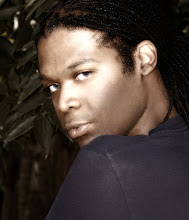Do you remember how Brooke Logan-Forrester (The bold and the beautiful – you know very well you’ve seen more than one episode) came to own 54% of Forrester creations? Well, let me refresh your memory: Brooke is a qualified lab technician of sorts. She was initially employed by the Forrester family to work in their lab to improve the quality of their fabrics/yarns or whatever it was until she came up with a fabric that the Forrester could not claim to be theirs. When they did and stole that from her, she sued the company and became a major share-holder of Forrester Creations. This, though fictional, shows directly how important fabrics are in Fashion – 54% and more important!
This was the point Deola Segoe made at the fashion seminars. Much earlier on in her fashion career, she struggled to find genuine African fabric until she came across fabrics which were generally accepted African material until she later learnt that some are really manufactured in Holland and sold in Africa… so what’s happening in Africa?
- When Deola first entered the fashion arena on an international scale, she was invited to show at
- Some of the complaints noted about African brands is that the quality of clothes is not to the standard of some of the international houses (including some of the fabrics used) and the high import duty charges, which presents a viable solution to some problems, limits the availability of such fabrics to reach our shores – which raises an eyebrow with me… is our Government conspiring against the success of South Africa’s fashion labels? For instance, the Indian Government, through their textiles industry, is directly involved in their fashion week and not just as a meek sponsor. They ensure that there is enough publicity for their fashion weeks and the fabrics used are sourced from their own country where people are adequately trained to manufacture fabrics. Where is
- The role of the media also got a mention. Their involvement is crucial in allowing the masses to know about fashion brands and the spectrum of clothes available to them. A relationship between media, stockists/retailers and fashion brands also needs to be garnered, monitored and nurtured into a functional relationship. Side note: I am glad bloggers are also acknowledged as playing a role in aiding PR efforts – it shows progress but South African media needs a little kick in the right direction but that’s talk for another day.
- Fern Mallis, founder of New York Fashion Week, found that
- Some of South Africa’s problems that do not aid in this struggle are due to a lack of a national fashion council, which most countries that host a fashion week have. This fashion council will not only have a register of the fashion brands/suppliers of fashion-related items, but regulates how the fashion world operates (and taking note of quality) AND acts as a platform of communication between fashion, government and consumer – which will perhaps be a great start to try to loosen the fabrics importing duties, hike-up small unknown communities that have technical and working knowledge of fabrics (yarns and threads)- they exist and Deola could bare testimony to that - and other such problems facing local fashion brands.
- Let’s also face facts: 5 BIG fashion weeks per year is also ridiculous. I love attending fashion week but wouldn’t one or two (if we still want to subscribe to “fall collection” and “spring summer” mentality when we all know that most fashion labels make money from spring-summer) fashion weeks suffice?
These are just some of the challenges facing the fashion industry and I am glad that they are being addressed and I applaud African Fashion International for taking this giant leap.

No comments:
Post a Comment